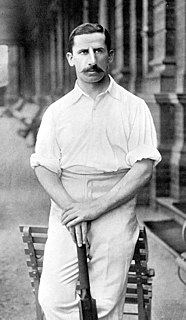Related Research Articles

Derbyshire County Cricket Club is one of eighteen first-class county clubs within the domestic cricket structure of England and Wales. It represents the historic county of Derbyshire. Its limited overs team is called the Derbyshire Falcons in reference to the famous peregrine falcon which nests on the Derby Cathedral. Founded in 1870, the club held first-class status from its first match in 1871 until 1887. Because of poor performances and lack of fixtures in some seasons, Derbyshire then lost its status for seven seasons until it was invited into the County Championship in 1895. Derbyshire is also classified as a List A team since the beginning of limited overs cricket in 1963; and classified as a senior Twenty20 team since 2003. In recent years the club has enjoyed record attendances with over 24,000 people watching their home Twenty20 fixtures in 2017 – a record for a single campaign. The local derby versus Yorkshire at Chesterfield now regularly sells out in advance.

William Chatterton was an English cricketer and footballer. He played first-class cricket for Derbyshire between 1882 and 1902 and for England in 1891/2. He captained Derbyshire between 1887 and 1889 and scored over 10,000 runs in his first-class career as well as taking over 200 wickets. He played football for Derby County, being one of 19 sportsmen to achieve the Derbyshire Double of playing cricket for Derbyshire and football for Derby County.

Harry Storer was an English football goalkeeper who played for Arsenal and Liverpool, and a cricketer who played first-class cricket for Derbyshire in 1895.
1871 was the 85th season of cricket in England since the foundation of Marylebone Cricket Club (MCC). Derbyshire County Cricket Club became a first-class club and the last matches were played by Cambridgeshire, who in the days of Bob Carpenter, the first Tom Hayward and George Tarrant had been one of the leading cricket counties.
John Frank Harvey was an English cricketer who played first-class cricket for Marylebone Cricket Club (MCC) from 1961 to 1967 and for Derbyshire from 1963 to 1972.

John Joseph Hulme was an English cricketer who played for Derbyshire between 1887 and 1903.

George Arthur Davidson was an English first-class cricketer who played for Derbyshire between 1886 and 1898 and for Marylebone Cricket Club between 1888 and 1898. A useful all-rounder, he scored over 5500 runs and took 621 wickets in his first-class career.
George Hector Cook Beet was an English cricketer who played first-class cricket for Derbyshire in 1928 and in 1932 and for Marylebone Cricket Club in 1928 and between 1933 and 1938.
John Smith was an English cricketer who played for Derbyshire from 1871 to 1878. He was a member of the team that played Derbyshire's first match in May 1871.
William Mycroft was an English cricketer who played first-class cricket for Derbyshire and MCC between 1873 and 1886. He was a left-arm fast bowler with a great deal of spin and a dangerous yorker that was often believed to be unfair – which may explain why he was not considered for the earliest Test Matches despite being in his prime. He took 863 first-class wickets at an average of 12.09 with 87 five-wicket innings and 28 ten-wicket matches in his career. His first ten-wicket match in 1875 against Nottinghamshire became the first of six in only nine games that season. He holds the Derbyshire record for most wickets in a single match, with figures of 17–103 against Hampshire at the Antelope Ground, Southampton in July 1876. This is one of only two times a player has taken seventeen wickets in a match and finished on the losing side – the other, by Walter Mead in 1895 was also against Hampshire. Mycroft had no pretensions as a right-handed tail end batsman: he scored only 791 first-class runs at an average of 5.34 and prior to Alf Hall and Father Marriott remained the last significant cricketer who took more wickets than he scored runs.
William Hickton was an English cricketer who played for Lancashire between 1867 and 1871 and for Derbyshire between 1871 and 1878. He was a member of the team that played Derbyshire's first match in May 1871.

Charles Augustus Ollivierre was a Vincentian cricketer who represented the West Indies in matches before they attained Test match status. Born in St Vincent, Ollivierre initially played first-class cricket for Trinidad; he was selected to tour England with the West Indies team in 1900. He later qualified to play first-class cricket for Derbyshire between 1901 and 1907, becoming the first black West Indian to play for an English county. Ollivierre was reasonably successful in county cricket and had a reputation as a stylish batsman. However, he dropped out of first-class cricket after 1907 owing to eye trouble.
George Hay was an English cricketer who played for Derbyshire between 1875 and 1886.
Wallis Evershed was an English cricketer who played for Derbyshire between 1882 and 1884.

Sir Sydney Herbert Evershed was an English brewer and cricketer who played first-class cricket for Derbyshire from 1880 to 1901 and was a long-serving club captain from 1891 to 1898.
John O'Connor was an English cricketer who played for Derbyshire in 1900.
John William Bennett was an English cricketer who played for Derbyshire in 1895 and 1896.
Derbyshire Country Cricket Club in 1877 was the cricket season when the English club Derbyshire played their seventh season.
Derbyshire County Cricket Club in 1887 was the cricket season when the English club Derbyshire had been playing for sixteen years and was the last season before they lost first class status for seven years.
Derbyshire Country Cricket Club in 1894 was the cricket season when the English club Derbyshire had been playing for twenty three years. Derbyshire's matches were re-accorded first class status in this season but they did not start to take part in the County Championship until the following season.
References
- ↑ British Census 1881 RG11 3428/14 p22
- ↑ John Young at Cricket Archive